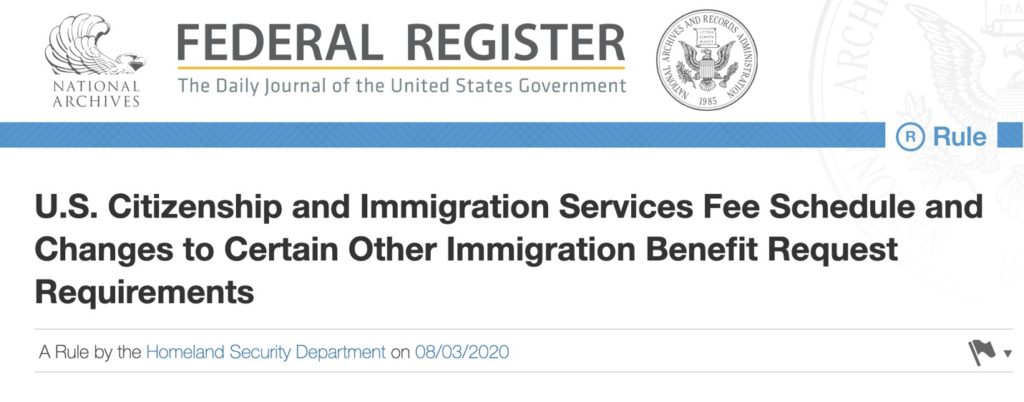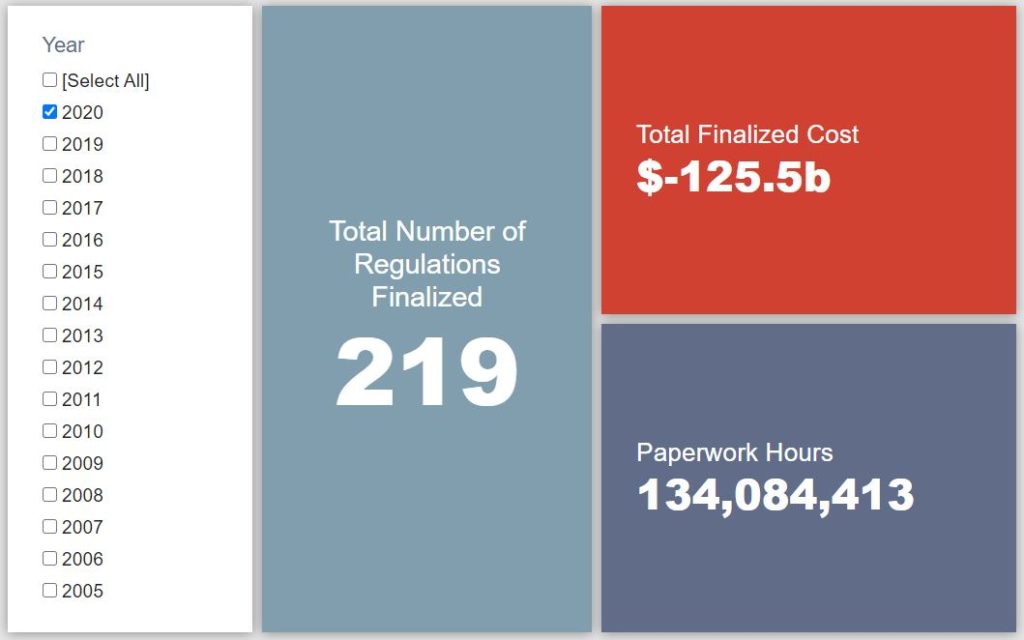Week in Regulation
August 10, 2020
Uncertainty Reigns in Last Week’s Key Rules
Looking just at the top-line net totals from last week, it is easy to think that this was yet another ho-hum week in the Federal Register. Across all rulemakings, agencies published $4.8 million in total net cost savings and cut 369,465 hours of annual paperwork. This seemingly mundane haul belies the inclusion a couple of notable rules, regarding housing and immigration, respectively, that contain much more interesting dynamics in how or what they seek to achieve.
REGULATORY TOPLINES
- Proposed Rules: 42
- Final Rules: 54
- 2020 Total Pages: 48,009
- 2020 Final Rule Costs: -$125.5 billion
- 2020 Proposed Rule Costs: $7.9 billion
TRACKING THE REGULATORY BUDGET
The one rule with implications for the fiscal year (FY) 2020 regulatory budget is a deregulatory action from the Department of Housing and Urban Development (HUD). The rule entitled “Preserving Community and Neighborhood Choice” essentially expands upon and finalizes the changes made by proposed rule from earlier this year that sought to repeal an Obama-era rule regarding “Affirmatively Furthering Fair Housing.” Last week’s rule is technically a new rule in which HUD, citing an exception under the Administrative Procedure Act for rules regarding grant programs, bypassed the usual notice-and-comment process.
This shift in the rulemaking thread appears to come directly from President Trump’s interest in more dramatically rolling back the Obama rule. While HUD’s summarized analysis does not have a clear estimate for how much more expansive this rule’s recissions may be, it does estimate cost savings “of no less than $23.7 million per year.” This figure comes from the net paperwork savings in the proposed rule’s economic analysis.
The Trump Administration expected to reach $51.6 billion in cumulative net savings in FY 2020. To date in the fiscal year, agencies have officially published 115 deregulatory actions and 40 regulatory actions, totaling $170.1 billion in quantified total net cost savings.
THIS WEEK’S REGULATORY PICTURE
This week, the Department of Homeland Security (DHS) raises fees on most immigration forms.

Source: https://www.federalregister.gov/documents/2023/01/04/2022-27066/us-citizenship-and-immigration-services-fee-schedule-and-changes-to-certain-other-immigration
On August 3, DHS published a rule in the Federal Register updating the fees associated with more than 70 immigration forms. The rule was issued followed a legally required biennial review of fees. DHS estimated that current fees would come up about $1 billion short of the operating need of associated programs. Accordingly, the agency increased fees on about 70 percent of forms.
The rule amounts to another instance of the Trump Administration using regulation to erect immigration barriers, following other actions such as the public charge rule. For its part, DHS argues that is not the intent of the rule. It does acknowledge, however, the hardship it will pose for some. It provides the example “that individuals earning the federal minimum wage may need to use an entire paycheck to pay the filing fee for Form I-485.”
The rule is also notable for its cost analysis. DHS did not estimate any effect on the regulatory budget because the economic impact could be costs or savings, so it could not determine if the effect would be regulatory or deregulatory. DHS estimates about $13.9 million in annualized costs, compared with a range of cost savings from $7.7 million to $22.5 million. Therefore, the rule could result in net costs of $6.2 million annually or net savings of $8.6 million annually.
The analysis also departs from the analysis of the proposed rule. In the proposed version, the total estimated cost was $11.4 billion. The final rule analysis treats the bulk of those costs as transfers, thus removing them from the economic impact calculation. That results in a net total savings of $3.6 million for the final rule.
TOTAL BURDENS
Since January 1, the federal government has published $117.6 billion in total net cost savings (with $125.5 billion from finalized rules) and 152.4 million hours of net annual paperwork burden increases (with 134.1 million hours due to final rules). Click here for the latest Reg Rodeo findings.












